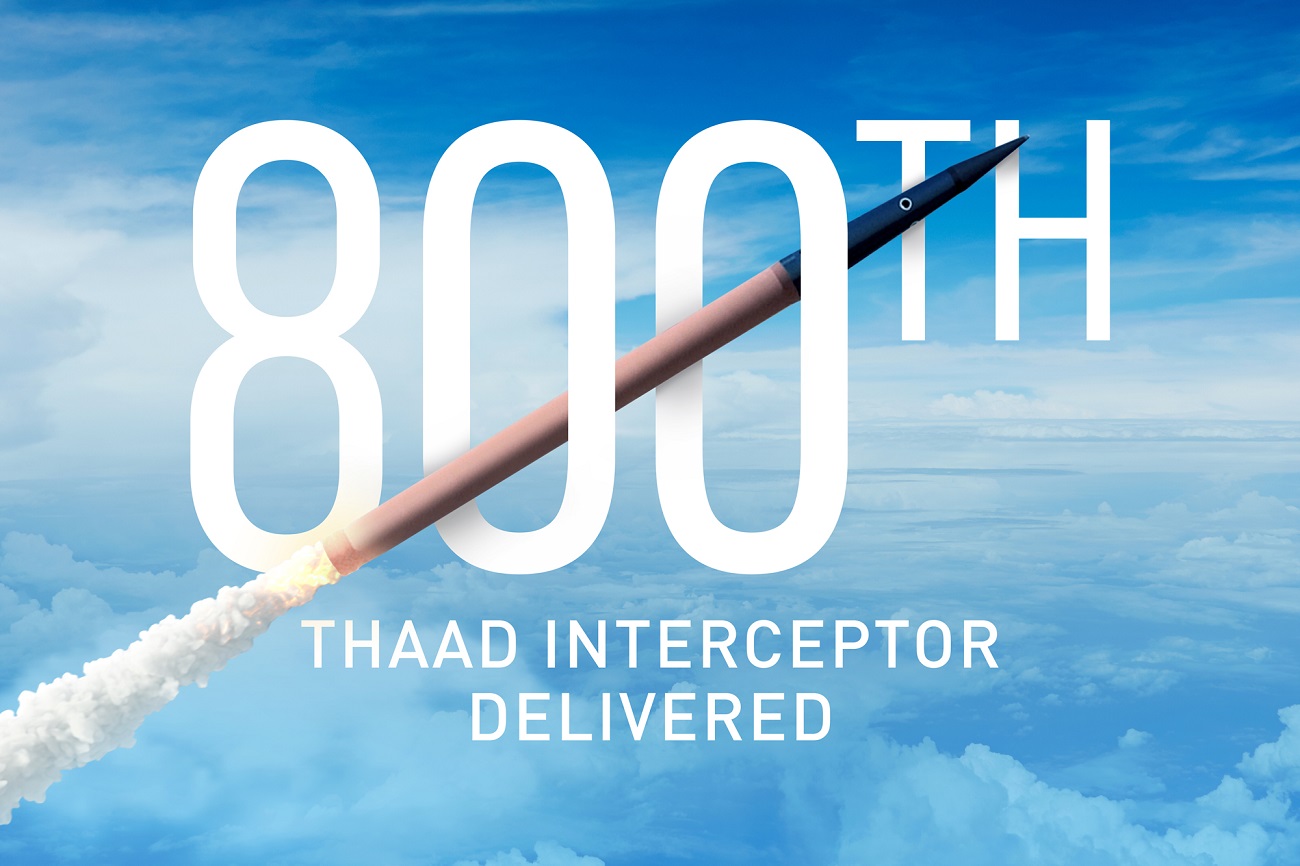Lockheed Martin has delivered the 800th Terminal High Altitude Area Defense (THAAD) interceptor to the Missile Defense Agency (MDA). THAAD is a highly effective, combat-proven defense capability against short, medium and intermediate-range ballistic missile threats, and is the only U.S. system designed to intercept targets outside and inside the atmosphere. In April, the MDA awarded Lockheed Martin a $180.3 million contract to produce additional interceptors and one-shot devices. The award marked the 15th lot of THAAD interceptors on order for the U.S. government and was a modification to the previous contract. THAAD’s flight test success rate and combat-proven status continues to drive demand and demonstrates our global commitment to 21st Century Security. The THAAD Weapon System has a 100% flight test intercept record and in 2022, successfully demonstrated integration with the PAC-3 MSE interceptor.
“With the delivery of the 800th THAAD interceptor, Lockheed Martin demonstrates our unwavering commitment to the MDA, and the service members who operate the system,” said Dan Nimblett, vice president of Upper Tier Integrated Air and Missile Defense. “Our production team and industry partners continue to ensure these deliveries are made on schedule with the highest quality standards to deter and stay ahead of advanced threats.”

Terminal High Altitude Area Defense (THAAD), formerly Theater High Altitude Area Defense, is an American anti-ballistic missile defense system designed to shoot down short, medium, and intermediate-range ballistic missiles in their terminal phase (descent or reentry) by intercepting with a hit-to-kill approach. THAAD was developed after the experience of Iraq’s Scud missile attacks during the Gulf War in 1991. The THAAD interceptor carries no warhead, instead relying on its kinetic energy of impact to destroy the incoming missile. Originally a United States Army program, THAAD has come under the umbrella of the Missile Defense Agency. The Navy has a similar program, the sea-based Aegis Ballistic Missile Defense System, which also has a land component (“Aegis Ashore”). THAAD was originally scheduled for deployment in 2012, but initial deployment took place in May 2008. THAAD has been deployed in the United Arab Emirates, Israel, Romania, and South Korea. On 17 January 2022, THAAD made its first operational interception, of an incoming hostile medium-range ballistic missile in the UAE.
Sometimes called Kinetic Kill technology, the THAAD missile destroys missiles by colliding with them, using hit-to-kill technology, like the MIM-104 Patriot PAC-3 (although the PAC-3 also contains a small explosive warhead). This is unlike the Patriot PAC-2 which carried only an explosive warhead detonated using a proximity fuze. Although the actual figures are classified, THAAD missiles have an estimated range of 125 miles (200 km), and can reach an altitude of 93 miles (150 km). A THAAD battery consists of at least six launcher vehicles, each equipped with eight missiles, with two mobile tactical operations centers (TOCs) and the AN/TPY-2 ground-based radar (GBR); the U.S. Army plans to field at least six THAAD batteries, at a purchase cost of US$800 million per battery. The THAAD Radar is an X-Band active electronically scanned array Radar developed and built by Raytheon at its Andover, Massachusetts Integrated Air Defense Facility. The THAAD radar and a variant developed as a forward sensor for ICBM missile defense, the Forward-Based X-Band – Transportable (FBX-T) radar, were assigned a common designator, AN/TPY-2.













